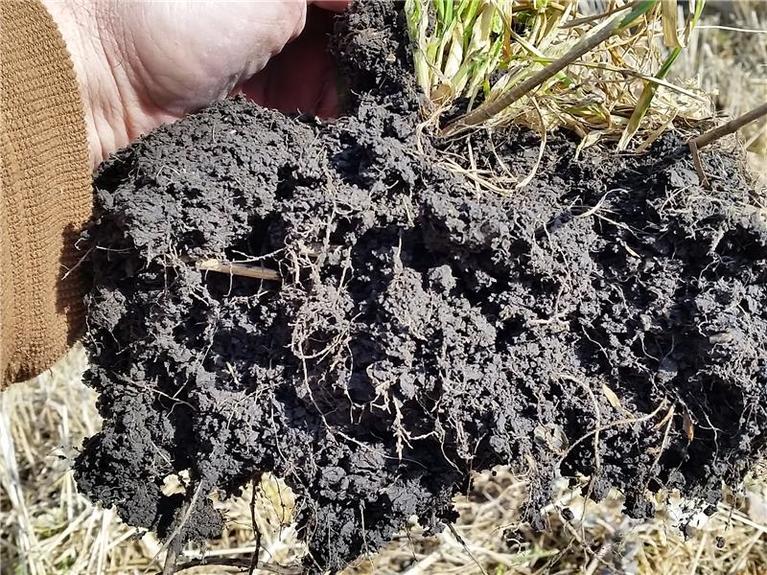What is Soil Health?
Soil health, also referred to as soil quality, is defined as the continued capacity of soil to function as a vital living ecosystem that sustains plants, animals, and humans. This definition speaks to the importance of managing soils so they are sustainable for future generations. To do this, we need to remember that soil contains living organisms that when provided the basic necessities of life - food, shelter, and water - perform functions required to produce food and fiber.
Only "living" things can have health, so viewing soil as a living ecosystem reflects a fundamental shift in the way we care for our nation's soils. Soil isn’t an inert growing medium, but rather is teaming with billions of bacteria, fungi, and other microbes that are the foundation of an elegant symbiotic ecosystem. Soil is an ecosystem that can be managed to provide nutrients for plant growth, absorb and hold rainwater for use during dryer periods, filter and buffer potential pollutants from leaving our fields, serve as a firm foundation for agricultural activities, and provide habitat for soil microbes to flourish and diversify to keep the ecosystem running smoothly.
(Source: https://www.nrcs.usda.gov/wps/portal/nrcs/main/soils/health/)
Keeping our soil healthy and productive is of paramount importance. By farming using soil health principles and systems that include no-till, cover cropping and diverse rotations, more and more farmers are actually increasing their soil’s organic matter and improving microbial activity. As a result, farmers are sequestering more carbon, increasing water infiltration, improving wildlife and pollinator habitat—all while harvesting better profits and often better yields.
(Source: https://www.nrcs.usda.gov/wps/portal/nrcs/main/national/soils/health/)
With soil health management, producers can increase profits and reduce costs and risk all while conserving our nation's resources for the benefit of all.
The original Soil Health Principles.
- Soil Armor
- Minimizing Soil Disturbance
- Plant Diversity
- Continual Live Plant/Root
In 2018, Livestock Integration was added as #5.
Soil Health Fact Sheets | NRCS (usda.gov) – useful fact sheets
Resources & Publications | NRCS Soils (usda.gov) – resources for information on soil health
Soil Health | NRCS (usda.gov) – this website has a link for individuals to receive e-mail updates concerning soil health

